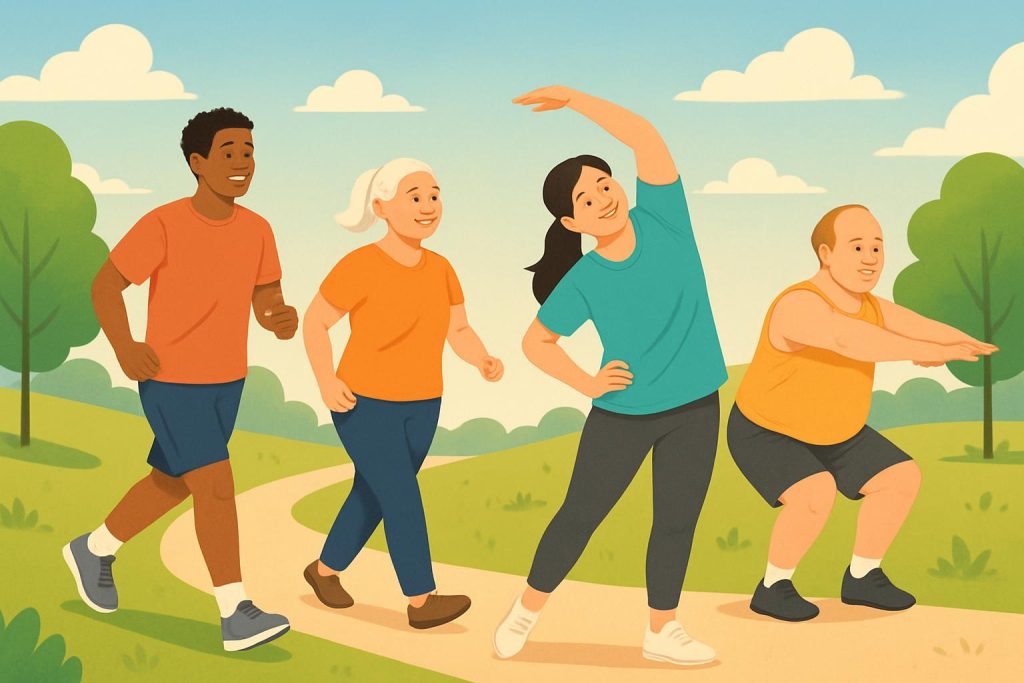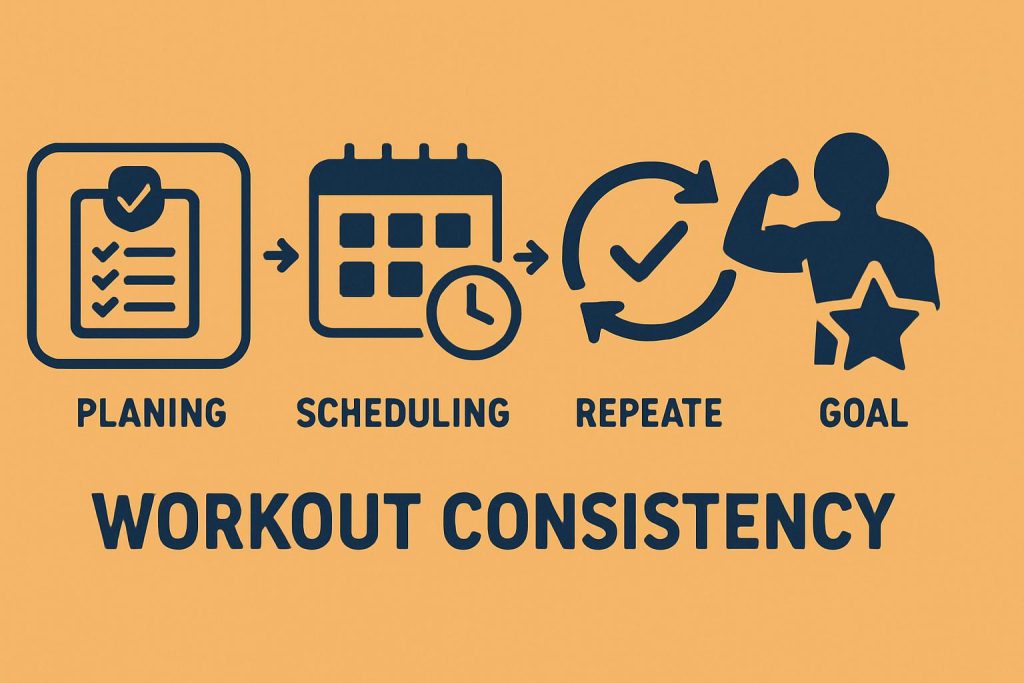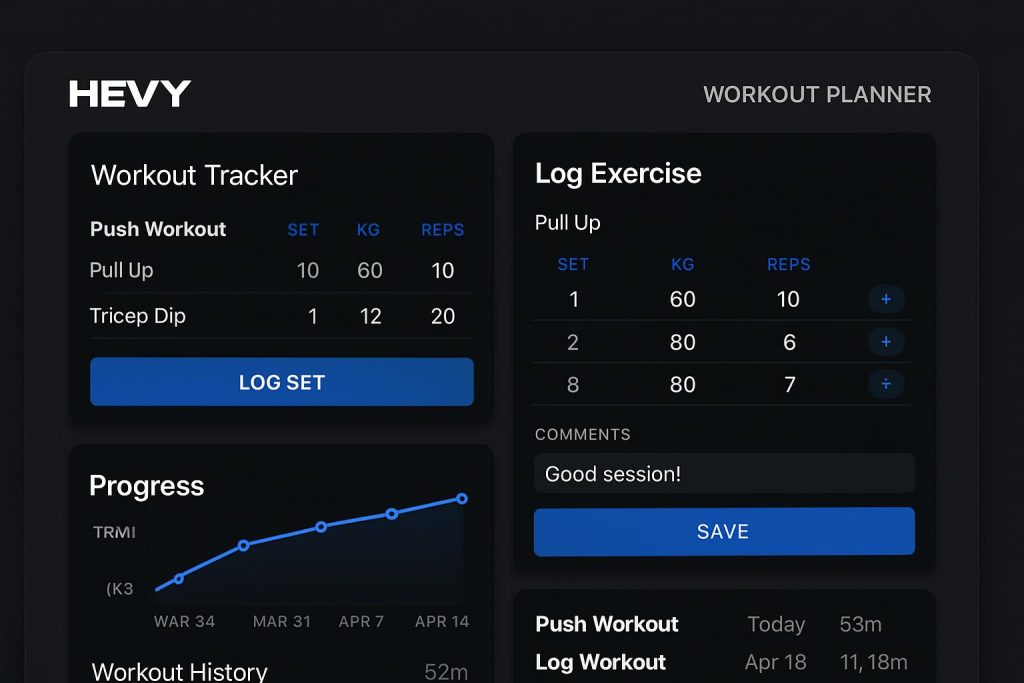Embarking on a fitness journey can feel like standing at the base of a mountain – exciting, a little daunting, but ultimately rewarding. Whether your goal is to lose weight, build strength, boost energy levels, or simply feel better in your own skin, taking that first step is the most crucial part. This guide is designed to equip you with the knowledge and confidence to begin your journey, transforming fitness from a chore into a sustainable and enjoyable part of your life.
Why starting your fitness journey matters
The decision to prioritize fitness extends far beyond aesthetics. Regular physical activity is a cornerstone of overall well-being, offering a cascade of benefits that ripple through every aspect of your life. Physically, it strengthens your heart, improves circulation, helps manage weight, builds stronger bones and muscles, and reduces the risk of chronic diseases like type 2 diabetes, heart disease, and certain types of cancer. Studies consistently show that active individuals tend to live longer, healthier lives. But the advantages aren’t just physical. Exercise is a powerful mood booster, releasing endorphins that combat stress, anxiety, and depression. It sharpens cognitive function, improves memory, enhances sleep quality, and boosts self-esteem. Think of it as an investment in your present and future self – a commitment to living a more vibrant, energetic, and resilient life, capable of handling daily stresses with greater ease.
Setting realistic goals: your roadmap to success
Jumping into an intense fitness regimen without clear goals is like setting sail without a map. You might make progress initially, but you risk burnout and discouragement. The key is to set SMART goals: Specific, Measurable, Achievable, Relevant, and Time-bound.
- Specific: Instead of “I want to get fit,” try “I will walk briskly for 30 minutes, three times a week.” Clarity eliminates ambiguity and provides a concrete action.
- Measurable: How will you track progress? “I will increase my walking duration by 5 minutes each week” or “I will be able to do 10 push-ups consecutively.” Using a tool like the Hevy workout planner app can be invaluable for tracking sets, reps, and progress over time, providing tangible evidence of your improvement.
- Achievable: Be honest about your current fitness level. Aiming to run a marathon next month when you haven’t run in years isn’t realistic and sets you up for failure. Start small – maybe a 15-minute walk – and build gradually. Success breeds success.
- Relevant: Does the goal align with your overall ‘why’? If your aim is stress reduction, maybe intense weightlifting isn’t the best starting point; perhaps yoga, tai chi, or swimming is more relevant to your primary motivation.
- Time-bound: Set deadlines. “I will achieve my goal of walking 45 minutes continuously three times a week within 8 weeks.” This creates a sense of urgency, structure, and a target date to work towards.
Remember, these goals aren’t set in stone. Life happens, and flexibility is key. Revisit and adjust them as you progress, learn more about what works for you, and perhaps discover new interests along the way.
Choosing your activity: finding the fun in fitness
The best workout is the one you actually enjoy and will stick with. If you dread your exercise sessions, sustainability becomes nearly impossible. The world of fitness is vast – don’t feel pressured to conform to trends if they don’t resonate with you. Explore different options:
- Cardiovascular Exercise: Activities like brisk walking, jogging, cycling, swimming, dancing, rowing, or using elliptical machines improve heart health, lung capacity, and endurance. They are excellent for burning calories and improving overall cardiovascular fitness.
- Strength Training: Lifting weights, using resistance bands, kettlebells, or doing bodyweight exercises (push-ups, squats, lunges, planks) builds muscle mass, boosts metabolism (as muscle burns more calories at rest), strengthens bones, improves posture, and enhances functional strength for daily activities.
- Flexibility and Mobility: Yoga, Pilates, dynamic stretching, and foam rolling enhance range of motion, reduce injury risk, improve posture, and can alleviate muscle soreness and stiffness. Often overlooked, flexibility is crucial for comfortable movement.
- Group Fitness: Classes like Zumba, spinning, HIIT (High-Intensity Interval Training), boot camps, or aerobics offer structure, expert guidance, built-in motivation from the instructor and peers, and social interaction. The energy of a group can be highly motivating.
- Outdoor Activities: Hiking, kayaking, rock climbing, trail running, or playing sports like tennis or basketball combine fitness with fresh air, vitamin D exposure, and the mental health benefits of being in nature.
Start by trying a few different things. Many gyms offer introductory passes or trial classes, and countless free workout videos and resources are available online (YouTube, fitness apps). Don’t be afraid to mix and match activities to create a well-rounded routine. For instance, combine strength training twice a week with cardio three times a week and add a yoga session for flexibility. Variety not only keeps things interesting and prevents boredom but also works different muscle groups and energy systems, leading to more comprehensive fitness.
Listening to your body: the importance of rest and recovery
Enthusiasm is great, but pushing too hard, too soon is a recipe for injury and burnout. Your body needs time to adapt, repair, and rebuild stronger. Ignoring its signals can derail your progress entirely. Pay attention:
- Rest Days: Schedule regular rest days into your weekly routine. These aren’t lazy days; they are crucial for muscle protein synthesis (repair and growth), replenishing glycogen stores, and preventing mental fatigue. The optimal number varies, but 1-3 rest days per week is common.
- Active Recovery: On rest days, consider light activities like walking, gentle stretching, or foam rolling. This can help reduce muscle soreness (DOMS – Delayed Onset Muscle Soreness) and improve blood flow without overly stressing the body.
- Sleep: Aim for 7-9 hours of quality sleep per night. During sleep, your body releases growth hormone, essential for muscle repair and recovery. Poor sleep hinders recovery, impacts performance, and can increase injury risk.
- Pain vs. Discomfort: Learn to differentiate between the normal muscle soreness or fatigue that comes with challenging your body and sharp, localized, persistent pain that could signal an injury. Never push through significant pain; consult a healthcare professional if needed.
- Start Slow & Progress Gradually: Especially if you’re new or returning to exercise, begin with shorter durations and lower intensities. Follow the principle of progressive overload – gradually increasing the challenge (weight, duration, intensity, frequency) as your fitness improves, but do so incrementally.
Fueling your journey: basic nutrition principles
Exercise and nutrition are inextricably linked partners in your fitness journey. You can’t out-train a poor diet, and proper fuel optimizes your workout results and recovery. While complex nutrition plans exist, starting focuses on building a foundation with these fundamentals:
- Hydration: Water is essential for countless bodily functions, including temperature regulation and nutrient transport. Drink plenty of water throughout the day, especially before, during, and after workouts. Dehydration can significantly impair performance and well-being.
- Balanced Meals: Aim for a balanced plate incorporating all macronutrients: lean protein (chicken, fish, beans, lentils, tofu, eggs) for muscle repair and growth, complex carbohydrates (whole grains, vegetables, fruits) for sustained energy, and healthy fats (avocado, nuts, seeds, olive oil) for hormone production and overall health.
- Portion Control: Be mindful of serving sizes. Even healthy foods contain calories, and consistently consuming more calories than you expend will hinder weight management goals.
- Limit Processed Foods & Added Sugars: Reduce your intake of sugary drinks, refined grains (white bread, pastries), fried foods, and heavily processed snacks. These often provide empty calories and can negatively impact energy levels and health.
- Prioritize Whole Foods: Focus on consuming foods in their most natural state – fruits, vegetables, whole grains, lean proteins, nuts, and seeds.
- Listen to Hunger & Fullness Cues: Eat when you’re genuinely hungry and stop when you’re comfortably full, not stuffed. This helps regulate intake naturally. Tools like the MacroFactor diet app can help you understand your energy needs and track macronutrient intake effectively if you desire more precision and data-driven insights.
For personalized advice, especially if you have specific dietary needs or health conditions, consulting a registered dietitian or using reputable resources like those offered by the National Academy of Sports Medicine (NASM) can provide tailored guidance.
Building consistency: making fitness a habit
Motivation is fleeting; habit is reliable. Consistency is the secret sauce to long-term fitness success. It’s about making physical activity an ingrained part of your lifestyle, like brushing your teeth. Here’s how to build that habit:
- Schedule It: Treat your workouts like non-negotiable appointments. Block out specific times in your calendar and protect that time.
- Find Your Best Time: Are you a morning person who feels energized after an early workout, or do you prefer to de-stress with exercise in the evening? Experiment to find the time slot where you feel most consistent.
- Prepare in Advance: Reduce friction. Lay out your workout clothes the night before, pack your gym bag and leave it by the door, or prep healthy snacks.
- Start Small & Build Momentum: The ‘all or nothing’ mindset is detrimental. Even a 10-15 minute workout is a win. Focus on showing up consistently, even for short periods. The habit itself is more important than the duration initially.
- Track Your Progress: Seeing how far you’ve come is incredibly motivating. Use a journal, a dedicated app, or a wearable device to log workouts and note improvements (e.g., lifting heavier, running longer, feeling stronger).
- Find an Accountability Partner or Community: Working out with a friend, joining a group class, or participating in an online community can provide support, encouragement, and make it harder to skip sessions. Some apps, like Gravitus, foster this sense of community among users.
- Habit Stacking: Link your new fitness habit to an existing one. For example, “After my morning coffee (existing habit), I will do my 15-minute workout (new habit).”
Overcoming common hurdles
Life happens. You’ll encounter obstacles on your fitness journey. Anticipating them and having strategies in place can help you navigate them successfully:
- Lack of Time: This is perhaps the most common excuse. Reframe it: it’s about priorities. Even short, intense workouts (like HIIT) can be effective. Look for opportunities to be more active throughout the day – take the stairs, park further away, walk during phone calls, do squats during TV commercials.
- Lack of Motivation: Motivation naturally waxes and wanes. Don’t rely on it. Rely on discipline and habit. Remind yourself of your ‘why’ – the core reasons you started. Revisit your goals. Try a new activity, update your workout playlist, or reward yourself for consistency (not with unhealthy food!).
- Feeling Self-Conscious: Remember that everyone in the gym or a class started somewhere, and most people are focused on their own workouts. Focus on your own progress and how you feel. Consider working out at home initially using online videos or apps, or find a gym with a more welcoming atmosphere during off-peak hours.
- Plateaus: It’s normal for progress (weight loss, strength gains) to slow down or stall after a while. Your body adapts. This is a sign you need to change things up. Re-evaluate your routine – increase intensity, duration, frequency, change exercises, or focus on a different aspect of fitness (e.g., add more strength training if you’ve only done cardio).
- Soreness: Mild to moderate Delayed Onset Muscle Soreness (DOMS) is normal when starting or changing routines. Don’t let it derail you. Active recovery (like light walking or stretching), foam rolling, adequate hydration, and sleep can help. However, distinguish this from sharp, persistent pain indicating potential injury.
- Boredom: Doing the same thing repeatedly can become monotonous. Keep things fresh by trying new classes, exploring different running routes, learning new exercises, or setting mini-challenges.
The long game: embracing the journey
Starting your fitness journey isn’t about a quick fix or a temporary diet; it’s about adopting a healthier, more active lifestyle for the long haul. It’s a marathon, not a sprint. There will be good days and bad days, weeks where you feel unstoppable and weeks where getting off the couch feels impossible. Be patient and compassionate with yourself. Celebrate small victories – completing a workout you didn’t feel like doing, lifting a slightly heavier weight, walking a little further. Focus on progress, not perfection. Learn from challenges and setbacks – they are part of the process. Adjust your approach when needed, listen to your body, and most importantly, keep showing up, day after day. Consistency, even when imperfect, is the ultimate key to unlocking the profound and lasting benefits of fitness. Your future self will thank you for the investment you make today.



